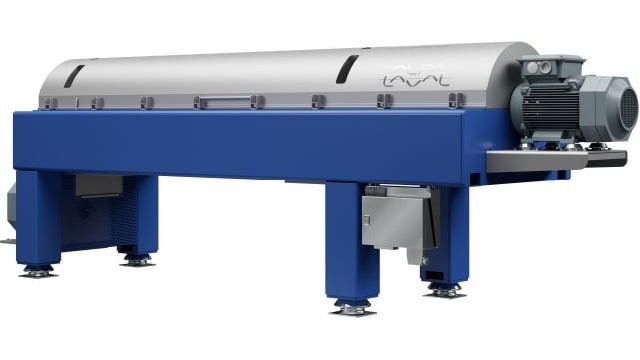ALDEC
Smaller, low-tech ALDEC decanter centrifuges are ideal for loads of smaller wastewater treatment facilities looking for reliable, low-cost sludge dewatering.
Less water, lower cost
Cost-effective decanter centrifuges are crucial for removing the water content from sludge from wastewater plants, as well as from industrial waste streams. The drier the sludge, the less space it takes up and the less it weighs – both resulting in big savings on transport and disposal costs.
Choose the best solution
Conventional, ultra-reliable ALDEC decanter centrifuges are ideal for sludge dewatering in all kinds of wastewater treatment facilities. They are the ideal low-tech complement to the larger-capacity, more advanced ALDEC G3 units.
Big benefits
With ALDEC decanter centrifuges, you benefit from low energy consumption as well as a minimum of maintenance costs, keeping dewatering costs to a minimum. They are also fully automatic, so you can keep labour costs down.
ALDEC decanter centrifuges are available with capacities ranging from 2 to 95 m3/h.
How it works
In the sludge thickening and dewatering process, separation takes place in a horizontal cylindrical bowl equipped with a screw conveyor. The feed enters the bowl through a stationary inlet tube and is accelerated smoothly by an inlet distributor. The centrifugal force that results from the rotation then causes sedimentation of the solids on the wall of the bowl. The conveyor rotates in the same direction as the bowl, but slightly slower, thus moving the solids towards the conical end of the bowl. The cake leaves the bowl through the solids discharge openings into the casing.
Separation takes place throughout the entire length of the cylindrical part of the bowl, and the clarified liquid leaves the bowl by flowing over adjustable plate dams into the casing. The conveyor rotates in the same direction as the bowl, but slightly slower, thus moving the solids towards the conical end of the bowl. The cake leaves the bowl through the solids discharge openings into the casing. Separation takes place throughout the entire length of the cylindrical part of the bowl, and the clarified liquid leaves the bowl by flowing over adjustable plate dams into the casing.

